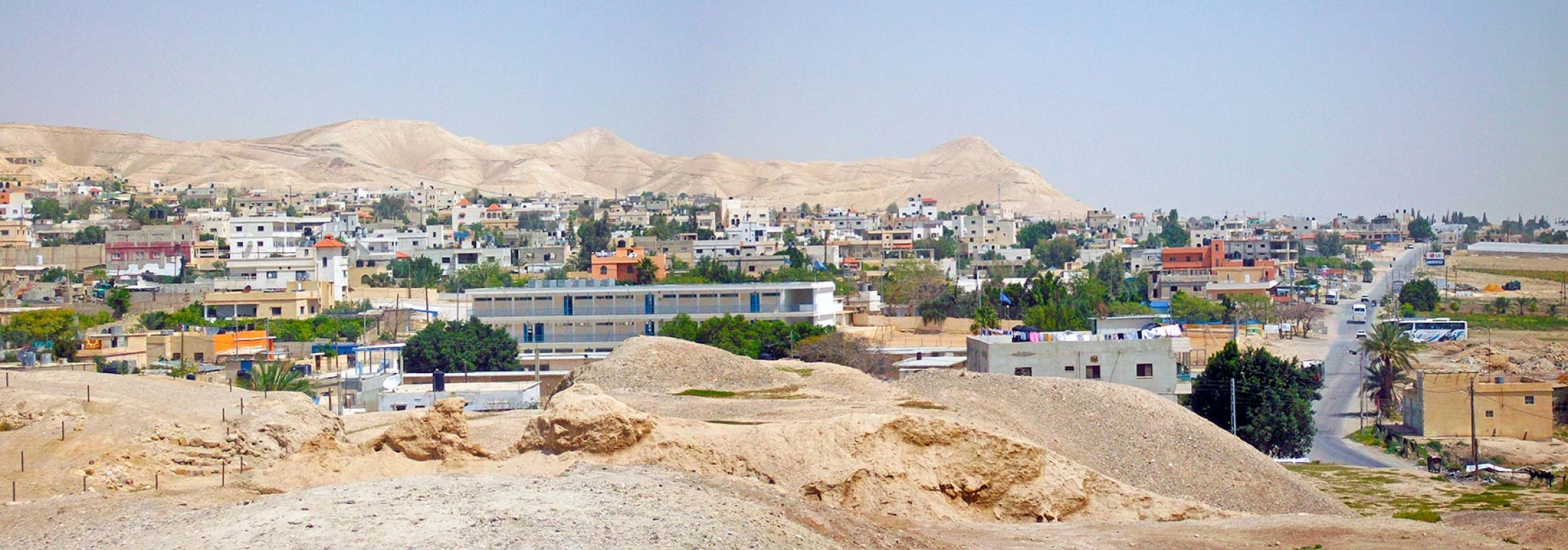Palestinian territories

The Palestinian territories consist of two physically separate entities, the West Bank and the Gaza Strip, in the Middle East. While not yet universally considered part of any sovereign nation, since November 2012, the Palestinian Authority has been upgraded to observer-state status by the United Nations. The Palestinian territories have all been under varying degrees of Israeli governance since 1967, and the final status of the territory remains the subject of ongoing and future negotiations.
Regions
West Bank
Bordering Israel to the west and Jordan to the east, including a significant coast line on the Dead Sea. It is de facto under control of Israel and the PNA depending upon the region.
Gaza Strip
The Gaza Strip borders the south-western coast of Israel and Egypt to the south-west. It is de facto under control of Hamas, a rival of the Fatah-controlled PNA.
Cities
Bethlehem – an ancient city much like many others in the West Bank, Bethlehem is also the site of Christian holy places such as the Church of the Nativity; it is a UNESCO World Heritage Site
Gaza – the largest city in the Palestinian Territories, with 450,000 people, Gaza city is a coastal city and the administrative capital of the Gaza Governorate, but it has been heavily damaged in several wars between Israel and Hamas and, due to border closures by Israel and Egypt, you probably can't get in
Hebron – highlights include a stunning old city and glass and pottery factories; divided into Palestinian-controlled H1 and Israeli-controlled H2
Jenin – the West Bank's northernmost city, only 26km from Nazareth. Its name's meaning is The spring of gardens.
Jericho – the "Oldest City in the World" and around 400m below sea level
Nablus – considered the commercial capital of the West Bank, it is known for its old city, its furniture trade and the delicious kunafa/kenafeh
Ramallah – the administrative capital of the West Bank and temporary host to the PNA, Ramallah is a magnet for Palestinians seeking work as well as foreign activists
See
Famous as the birth place of Jesus, the small town of Bethlehem is a must-see for most visitors of the Palestinian territories. The Church of Nativity, built over the cave where – according to tradition – Jesus of Nazareth was born, is a sacred destination for Christians and Muslims alike. From here, it's a short walk to the Shepherd's Field, where the birth of the holy child is believed to be announced to a group of shepherds when they saw the Star of Nativity. Or head to Solomon's Pools, just a few kilometres out of town. Bethlehem is also famous for its Banksy Art, four graffiti can be found here. Around the city visit the stunning Monastery of Mar Saba.
Where Bethlehem is known as a place of birth, Hebron is famous as the burial place for the great patriarchs and matriarchs. A holy destination for both the Islamic and Jewish people, this city is home to the Tomb of the Patriarchs and Matriarchs and was once the capital of the Kingdom of Israel. Hebron has a delightful old town, full of winding alleys and bustling bazaars and is locally known for its pottery workshops and glass blowers, making it a fine place to see some of the excellent Palestinian craftsmanship. But it is also distinctly and politically interesting for its separation into a Jewish and a Palestinian side.
The ancient city of Jericho, said to be among the oldest continuously inhabited cities in the world as well as the lowest (at 260m below sea level), has several sights of interest. Admire the mosaic floors in the remnants of the Hisham's Palace, an extensive 7th century royal complex and don't miss the Monastery of Gerasimus of the Jordan. Inside lies a cave where – according to tales – Jesus stayed during his 40 day fasting period.
The north of the Palestinian territories is dominated by scenic, hilly landscapes and green valleys, dotted with olive trees and villages. The old city of Nablus is well worth a visit, especially for its delicious kunafa/kenafeh . Going north from Nablus close-by is the village of Sebastia Archaeological Park, which boasts some impressive Roman ruins. And further towards Jenin you will find the St. George Church, one of the oldest churches in the world. And finally take a relaxing stop in the Cinema Jenin Guesthouse with its distinct and interesting history, like Jenin itself.
Do
The Nativity Trail. Trek along the path that took Joseph and Mary from Nazareth to Bethlehem. edit
Abraham's Path. Walk along the settings that the Patriarch Abraham wandered through during his journey across the Levant region. The Abraham trail is a joint project with branches in Turkey, Jordan, Israel and Palestine.
Learn
It is possible to study Arabic and other subjects in the West Bank. Specifically at Birzeit University near Ramallah.
If you are interested in learning about the social, political and cultural aspects of Palestinian life, there are several programs and organizations offering courses, workshops or learning tours, such as: The All Nations Cafe in the Bethlehem - Jerusalem area, or Green Olive Tours, that offers organized informative and political tours throughout the whole of the West Bank.